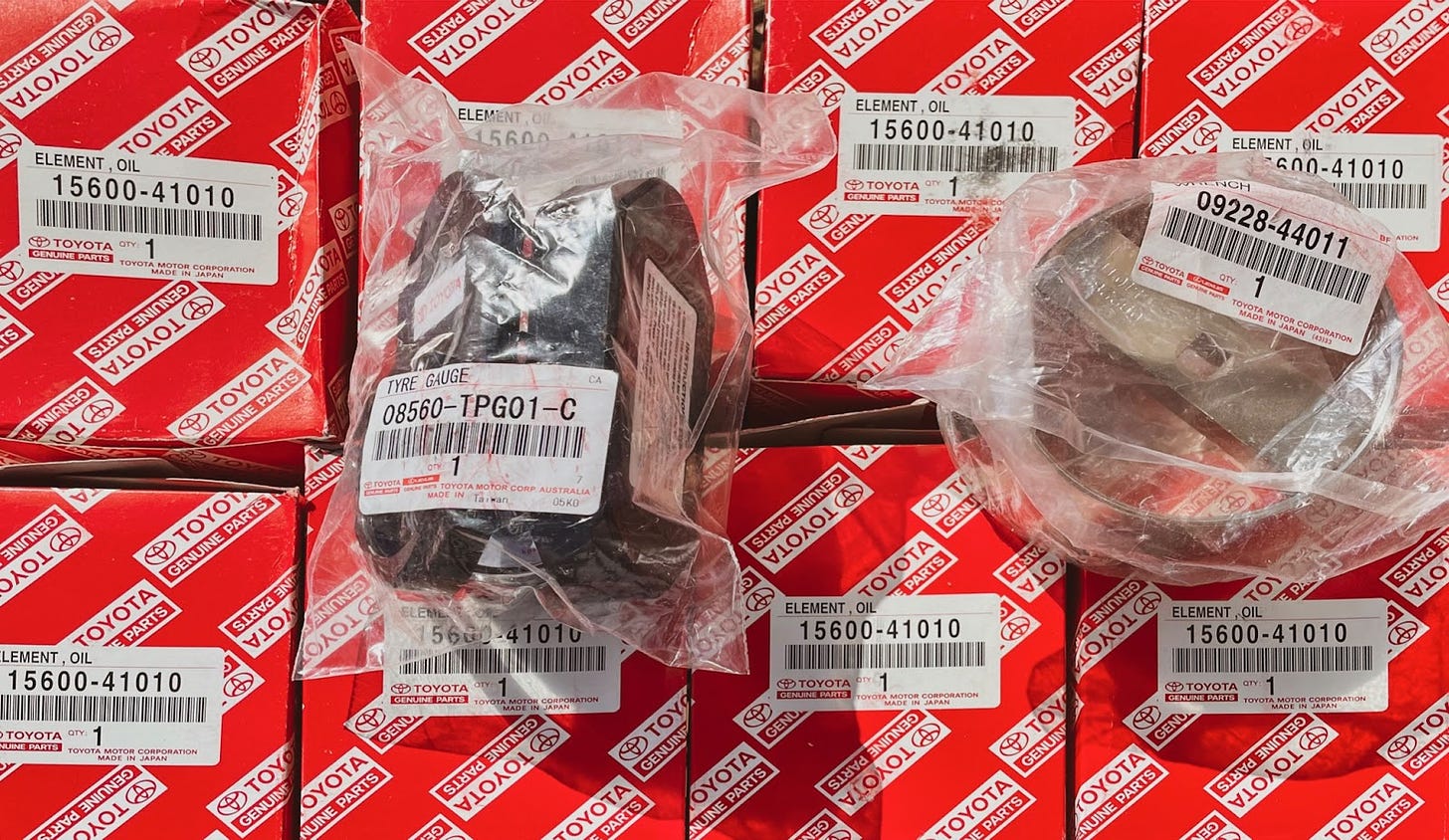
This from the whyisthisinteresting sub stack. Thanks to DC Denison for the heads-up.
Ryan McManus (RMM) currently works as Design Strategy Director at D-Ford, Ford’s Human-Centered Design group, working on the future of mobility. He drives a 1997 Toyota Land Cruiser.Ryan here. Recently, the check engine light came on in my daily driver, a 1997 Toyota Land Cruiser. So I did what I usually do: ran the code, figured out the fault, and messaged my go-to Land Cruiser guy, Onur Azeri. Onur agreed with my assessment of the issue, but his response was somewhat uncharacteristic: he asked if I intended on keeping the truck. Because if I’m keeping it, I should replace the entire faulty system and not just the single part. Why would that be? Because he doesn’t know how much longer these parts will be available. Or, in his words, “This stuff is going to be gone very, very shortly.”
Why is this interesting?
Before we delve into why this response was surprising, a bit of background about Onur. He has been in the Toyota parts game, both at a dealer and independently, for decades. He is a polymath of the Toyota production parts and logistics system and is intimately familiar with key suppliers. On the night I sent him that message, he had just returned from Dubai to visit one of the largest parts clearinghouses in the world.
And so this is where his reply to me was a little uncharacteristic. One unrecognized an early signal in the parts supply chain that for him portended a much larger shift in the industry: that the reliable access
to parts for decades-old vehicles was ending. Or, in his words: “What
we are seeing, in essence, is the nature of service parts availability responding to the greater macro-scope of the twilight of the ICE era
in human mobility. We are at 11:55pm—we just have a few minutes left before the day changes.”
To understand the impact of this, one needs to understand that parts obsolescence is nothing new. Since the dawn of the mass-manufactured automobile, there has been a robust aftermarket for spare and replacement service parts. How long a vehicle’s parts are available after purchase is a complex equation that needs to account for the size of the Units in Operation (UIO), how competitive the aftermarket is for the particular part, how many other “platforms” share the same part (platforms, sometimes interchangeably referred to as “architectures”, are auto-industry speak for the shared structure, components, and other hardware underpinning multiple models from the same manufacturer), and the relative cost and complexity not just of the materials but also the tooling, storage, and transport.Toyota has been a leader in the efficiency of these logistics—famously applying both the Kanban and Just In Time production philosophies. This has allowed them to supply a market for their vehicles in a highly efficient manner, keeping the global fleet of Toyotas in spares at relatively low cost and high availability. The chances of finding a part that had been discontinued from Toyota was fairly low. The Land Cruiser (we've posted several LC's on AL) platform is actually one of the most extreme examples of this—a vehicle that is depended on for both its durability and serviceable longevity across every continent and environment for decades after production date means that the value of its related part ecosystem is likely one of the more inured to the economics equation of discontinuation.
Which, again, made Onur’s comment so surprising: why had that equation changed, in his mind?
Two factors could be contributing to this acceleration of obsolescence. The first is the more immediate one—supply chain logistics have upended the automotive industry in historic ways, and parts are not immune to this impact. Semiconductor supply specifically has likely been forever reshaped. This has been covered extensively, so let’s skip over it for now.
The second, more lasting storm to hit the parts aftermarket, is the rapid industry transition to battery electric vehicles (BEVs), with many seeing 2035 as the inflection point. Not only do battery electric vehicles require more complex, semiconductor-hungry parts, and systems, but their overall need for parts is actually far less than their combustion counterparts, especially in the consumable aftermarket. No coolant hoses, no distributor caps, no spark plugs—only tires, windshield wipers, and brakes (and even those at a less frequent replacement interval).
So this is the event horizon I believe Onur sees coming from his particular vantage point in the system: there will be fewer supplies to make parts for vehicles in the future, the vehicles of the coming future will require less of an aftermarket for parts (and the size of that market will shrink considerably year over year as ICE vehicles age out and die), and automakers will shift their business models from a robust parts sales aftermarket to revenue-generating connected subscription services.
This is all happening at a sort of fascinating time for the industry. Because of the supply chain disruptions and the irreversible schism in semiconductor supply, new cars are hard to come by. This fact has had a more dramatic effect on used vehicle values, where historical things like day-of-sale depreciation have all but evaporated. Combine this with a resurgent romanticism (and subsequent valuation) for vintage vehicles of the 60s-90s being driven by everything from Bring a Trailer to RADwood, and the internal combustion era might be having a bit of a supernova moment before collapsing into itself. And all of the people buying vintage Civics and 911s and Land Cruisers might find their upkeep a difficult proposition in the years to come.
And so back again to Onur’s prompt: do you intend to keep the truck, or sell it? Because if you want to sell it, fix only what you need to and exit at a historically high value. But if you intend to keep it, fix everything you can while parts are still available, and drive it as long as you can into that inevitable sunset. (RMM)


No comments:
Post a Comment
Note: Only a member of this blog may post a comment.